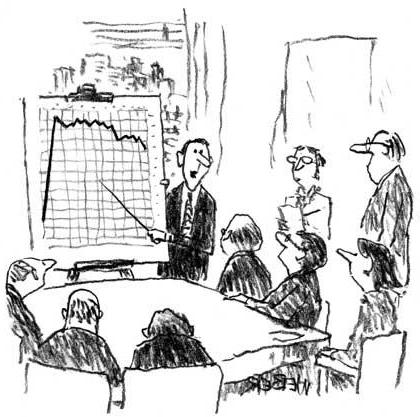Various types of plans are regularly compiled by enterprise management. The success of the work and the achievement of high results largely depend on how clearly, efficiently and in detail they will be compiled. This is a kind of guideline that helps the company move in the right direction, taking into account the external situation and the degree of resource provision.
Plans and planning
Planning is an activity to determine the perspective state and functioning of a company. It plays a huge role in the organization and carries with it several important functions:
- determination of the development prospects of the enterprise;
- saving material resources;
- reducing the risk of ruin and bankruptcy due to unforeseen fluctuations in the economy;
- timely response to changes in market conditions;
- increase work efficiency.
A plan is an approved document that contains a specific list of actions, goals, methods and digital indicators drawn up for a specified period. In addition, it includes information on available and missing resources, which are designed to ensure the most complete compliance of the results with the previously announced.

Planning Principles
All types of plans are compiled on the basis of certain principles:
- objective necessity dictated by modern economic conditions;
- all indicators should be specific and have a numerical measurement;
- the plan should have clear timelines;
- all figures should be realistic and reasonable (based on the availability of resources in the enterprise);
- the form of compilation of the program must be flexible so that it is possible to adapt to changes in the external and internal environment;
- planning should be carried out comprehensively and cover all areas of the enterprise;
- programs for all structural units must not contradict each other;
- All drawn up and certified plans are binding;
- focus on achieving maximum economic results;
- At each stage, several alternatives should be developed, among which the optimal one is subsequently selected.
Compliance with these principles allows you to make plans real, detailed, and most importantly effective.

What are the plans
In accordance with various classification features, the following types of plans are distinguished (for better visualization, we designed the material in the form of a table).
| Sign | Kinds |
| By time | Short term.
Medium-term. Long term. |
| By purpose | Tactical.
Operational. Strategic. |
| By accuracy | Detailed.
Enlarged. |
| By application | Corporate
Guild. |
| In content | Production and sales of products.
Supply. Personnel. Costs Financial and investment. Social. |
| By reference | Reactive (due to any events or based on previous experience).
Interactive (involve the interaction of past, future and present indicators). |
All of the listed qualification characteristics can exist both individually and intersect in one planning document.

Business plan
To attract investment or to obtain a loan to develop your own business, you must correctly present your idea. To do this, you need to draw up a business plan, which is information about the organization, as well as its financial indicators.It consists of the following sections:
- first, a short summary is prepared that reflects the overall content of the document;
- the following describes the objectives of the project, as well as the tasks that are designed to ensure their achievement (this component of the plan should reflect not only the philosophy of the organization, but also its focus on the material result);
- information on the activities of the company;
- analysis of the situation in the industry, as well as a description of the competitive environment;
- target audience and markets;
- marketing strategy and promotional events;
- production technology;
- organizational structure and activities;
- information on the planned number and structure of personnel;
- financial part (this component of the plan should contain calculations of all economic indicators);
- company responsibility;
- contingencies and liquidation of a business.
Inspection Plan
The work of the enterprise requires continuous monitoring of compliance with specified indicators. To do this, an audit plan is drawn up for the organization as a whole, as well as for each unit individually. Similar documents are also compiled by tax and other regulatory services. At the enterprise, inspections can be carried out both on their own, and with the involvement of unauthorized persons and organizations. This should also be spelled out in the plan.
Definition of a promising strategy
Strategic planning is the process of determining the desired future state of an enterprise through analysis, forecasting and goal setting. We can say that this is a certain set of actions to create long-term prospects for the organization.
Strategic planning may include the following points:
- distribution of material and technical resources between units of the organization;
- response to changes in the external environment, as well as gaining one’s own niche in the market;
- a possible future change in the organizational form of the enterprise;
- coordination of managerial actions in the internal environment;
- analysis of past experience in relation to future plans.
The strategy of the enterprise is developed by top managers of the company. It must be supported by financial calculations based on a retrospective analysis. One of the main requirements for such plans is flexibility, because the external environment is quite unstable. Also, when developing a strategy, it is necessary to take into account the fact that the costs of its implementation should be fully justified by the expected results.

Enterprise Development
Enterprise development plan implies dramatic changes both in the economic and organizational system of the company. At the same time, significant financial and technological growth should be observed. The central place is occupied by an increase in the volume of manufactured products and, as a result, in net profit.
The strategic development plan of the enterprise can be developed in the following main areas:
- improvement of the production program;
- implementation of scientific and technological progress;
- increasing production efficiency by increasing indicators of labor productivity and material productivity;
- a plan for the construction of new facilities, as well as the installation of new equipment;
- improving the personnel structure and composition;
- improving the social status of workers;
- introduction of environmentally friendly production systems.

Long-term plans
Long-term plans - this is the most important component of the activities of managers, which largely determines the effectiveness of the company as a whole. During their development, not only specific goals should be indicated, but also the resources that will be used to achieve them. In addition, the timing of the implementation of planned activities should be determined.We can say that it is necessary not only to determine areas of activity, but also to anticipate options for the development of the situation in the external environment.
Future plans are based on forecasts regarding the future economic situation both within the organization and beyond. The compilation period of such a program can cover a period of time up to 15 years.
Financial planning
The financial plan is inextricably linked with the development of economic and social issues. It reflects the use of material resources as well as the planned cost of finished products. Also, when compiling this document, the use of available material stocks and financial resources should be provided in order to improve the production process.
The financial plan in its form resembles a balance sheet. It should clearly spell out all the articles that relate to revenue and expenditure. The income section displays operations such as income from participation in capital, interest on deposit accounts, etc. Speaking of costs, note depreciation, debt repayment, and so on.

The annual plan of the enterprise
Almost every production (and even non-production) enterprise considers it mandatory to draw up a work plan for the year. It spells out such moments as the cost of manufacturing components and parts, as well as the cost of finished products, the revenue that is expected to be received, as well as the amount of mandatory payments.
The annual plan is a kind of forecast. It is based on the development trends of the enterprise itself, as well as the industry and the market as a whole. These forecasts are based on data from previous periods, taking into account possible deviations and unforeseen fluctuations in the economy.
At large enterprises it is not enough to draw up an annual plan only for the organization as a whole. Financial calculations and detailed economic indicators for each division are required. Moreover, such plans should be linked together and not have contradictions.
Operational plan
The operational work plan allows for the implementation of the strategic goals of the enterprise. Unlike long-term plans, this variety regulates the current activities of the company. Such a document may cover a period of up to three months.
The contents of the operational plan can be described as follows:
- the organizational structure of the enterprise, which must undergo changes or remain in the same state;
- manipulation of the existing technological base or the acquisition of new equipment;
- increasing the efficiency of economic efficiency in general or its individual indicators;
- determination of the profitability of the coordinates of the enterprise itself or its main contractors;
- management process improvement inventories in order to ensure their savings;
- improvement of product quality control processes at all stages of its manufacture;
- increasing the company's reputation among suppliers and customers by improving the image.
Planning Procedure
Drawing up work plans of enterprises involves passing through several successive stages:
- identification of possible problems and risks that the company may face in the long term;
- determination of the goals of the enterprise, as well as their clear economic justification and assessment of the reality of their implementation;
- planning material and technical and financial condition of the enterprise; assessment of the cost of resources that are necessary to achieve the objectives;
- detailing goals by dividing them into individual specific tasks;
- development of measures to monitor the implementation of plans, as well as determining their schedule.
Without the preparation of clear and detailed plans, it is impossible to ensure uninterrupted and efficient operation of the enterprise. Management should have a clear understanding of the goals of the activity, as well as the means that will be needed to achieve them. In addition, all types of plans enable the company to mitigate the effects of economic fluctuations.








